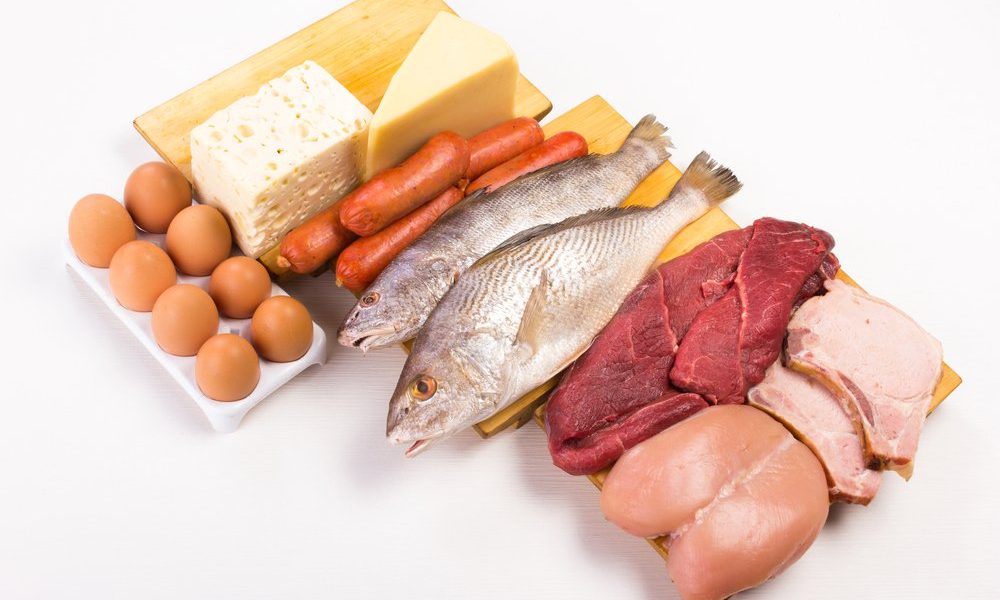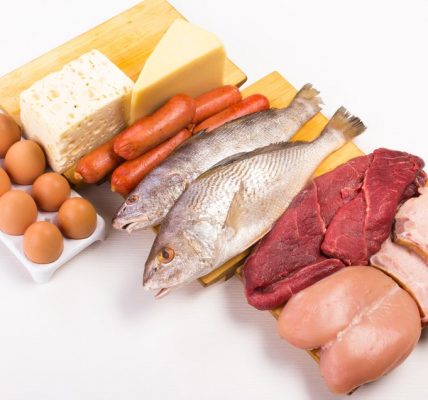Protein, as we all know, is a vital component of a healthy and balanced diet. Proteins are found throughout our bodies, from muscles and bones to enzymes and antibodies. Despite the essential role protein plays in our bodies, we may be consuming more protein than we really need. Let’s take a closer look.
First, we need to understand the motivation behind the overconsumption of protein. As you take a stroll through a Safeway or Walgreens aisle, or down a street lined with restaurants, such as Telegraph or Center Street, take a closer look at all the food choices, and you will see for yourself America’s obsession with high-protein foods. From burgers, chicken, and processed lunch-meats to the iconic protein bars and shakes every gym-goer is used to seeing, protein is seemingly everywhere. For me, my protein may come from a quick wrap or burrito I grab at a campus café, or a protein bar for my snack in-between classes. With these protein-packed items’ great taste, and the information circulating that protein can improve muscle mass and help manage body weight, it’s no wonder that high-protein foods are so popular.
The Recommended Dietary Allowance (RDA) for protein is 0.8 grams of protein per kilogram of body weight. This translates to an average of 46 grams of protein per day for adult women and 56 grams per day for adult men. 10-35%, the Acceptable Macronutrient Distribution Range (AMDR), of an adult’s calories consumed should consist of protein. So what do all these numbers mean?
It’s difficult to track exactly how much protein we’re eating, since most students don’t have the time to go around recording all the calories they eat every day and if the amount of nutrients they are eating falls in healthy ranges. (However, if you’re interested, there are some handy food and nutrition tracking apps out there, such as LIVESTRONG.COM’s MyPlate Calorie Tracker or MyFitnessPal’s Calorie Counter and Diet Tracker). In addition, the “right” amount of protein one should be eating depends on many factors, such as age, activity level, and muscle mass, and research and discussion on the optimal amount of protein a person should be eating are still ongoing.
Why can too much protein be a problem? Meats, in particular red meat, are a major source of protein in our diets, and are often high in saturated fat, which is linked to increased risks of cardiovascular disease, diabetes, and even cancer. Consuming protein in excess amounts can also put people at risk for osteoporosis and kidney and liver problems. In fact, the majority of Americans aren’t body builders with active lifestyles who may need the extra protein. For us, as busy students, often times the only physical activity we engage in is walking to and from class. If the body’s demand for protein isn’t high enough, the body stores it for a short period of time, and if left unused, the protein gets turned into fat by the liver. Simply put, if you take in too much protein, you may gain weight. Protein in our diets is necessary, but protein deficiency is not a problem in our society, and odds are, you’re already getting plenty of protein in your regular diet.
The best advice for students is to choose a variety of protein foods by balancing plant and animal proteins, and to consider the fats, vitamins, and other nutrients and minerals that come along with the protein they are eating. Try limiting red meat and processed meat intake, and aim for the protein sources that are low in saturated fats, sodium, and processed carbohydrates. Go lean, and vary your protein routine.
Some recommended protein sources:
- Lean meats
- Wild fish
- Eggs
- Whole grains
- Beans and other legumes
- Unsalted nuts
- Soy products
- Quinoa
- Nonfat or low-fat Plain Greek Yogurt
- Hemp, chia seeds
- Lentils
- Broccoli
Citations
- The Nutrition Source: Protein <http://www.hsph.harvard.edu/nutritionsource/what-should-you-eat/protein/>
- How much protein do you need everyday? <http://www.health.harvard.edu/blog/how-much-protein-do-you-need-every-day-201506188096>
- Protein: Are You Getting Enough? <http://www.webmd.com/diet/healthy-kitchen-11/how-much-protein?page=1>
Article by Jasmine Deng
Feature Image Source: Men’s Health
























